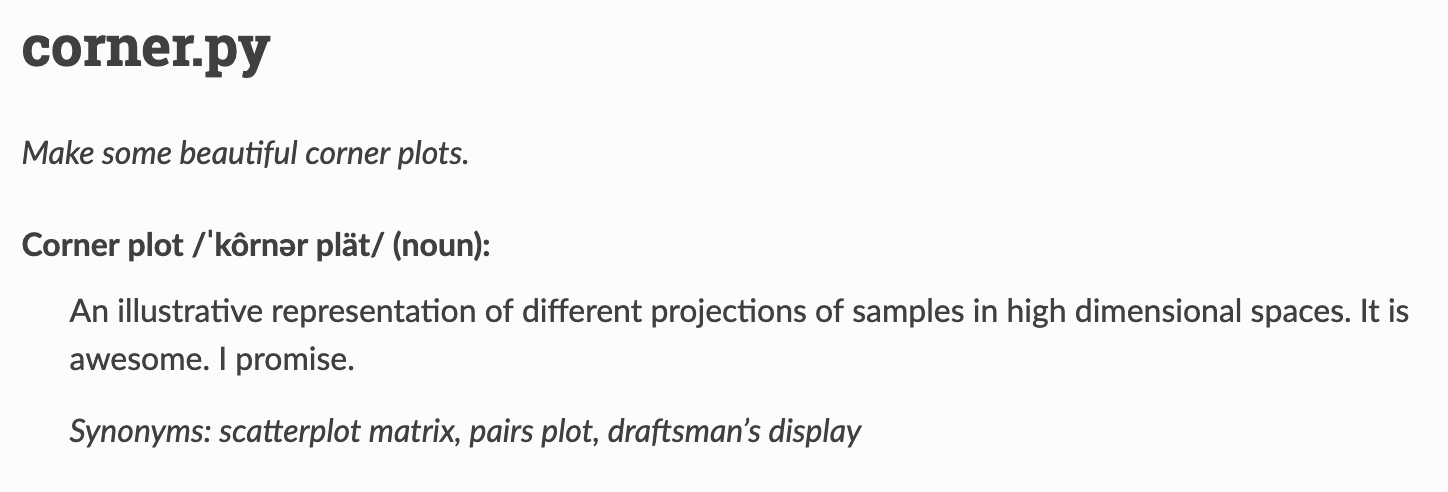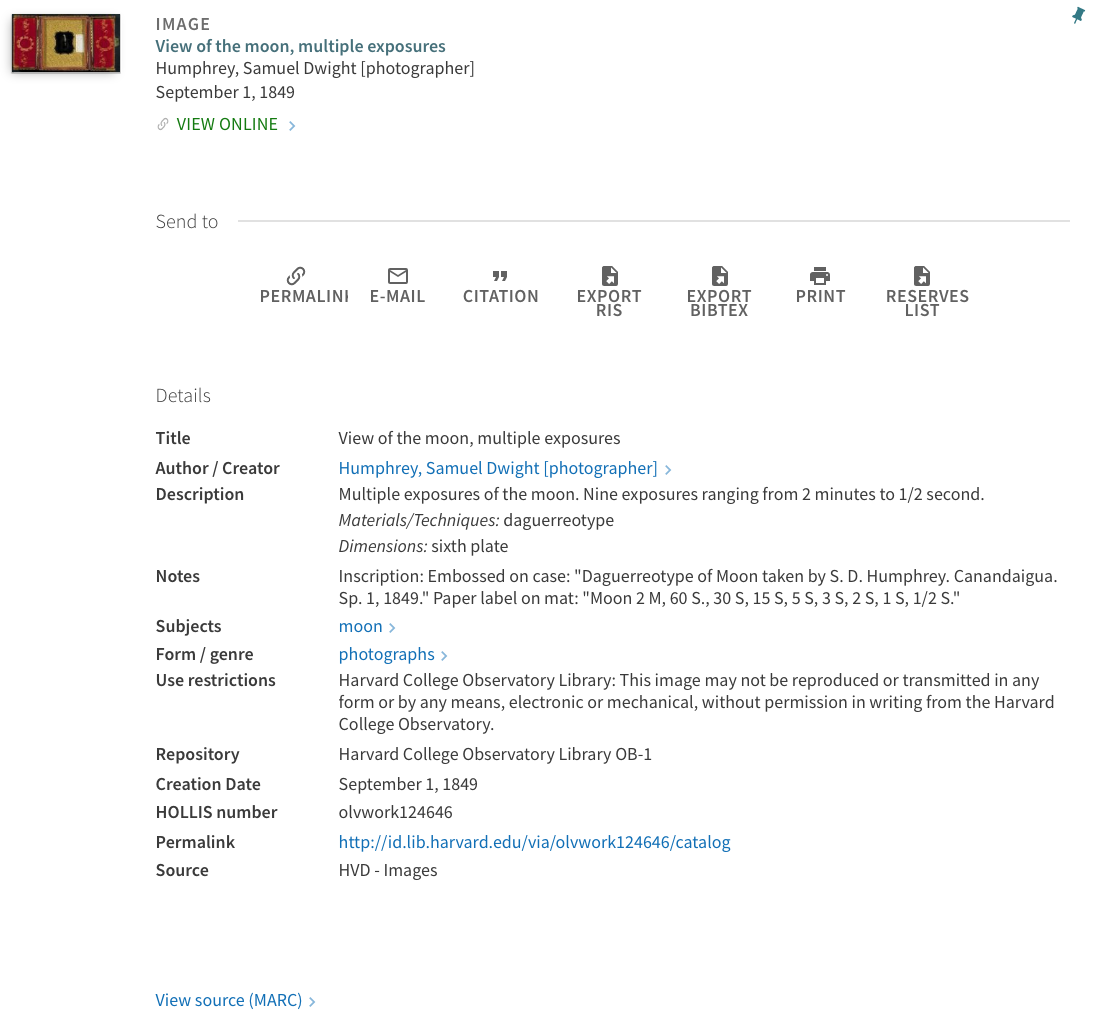Legacy
Preservation and Scientific Software
2020
Daina Bouquin
Harvard-Smithsonian Center for Astrophysics
daina.bouquin@cfa.harvard.edu
I'm a librarian.
Harvard University
Smithsonian Institution
Some things that I work on:
- arXiv Next Generation IT Advisory Group
- CfA Scientific Computation Advisory Committee
- Harvard University Science Libraries Council
- Mozilla Foundation Open Leaders Advisor
- Software Preservation Network Steering Committee
- Unified Astronomy Thesaurus Steering Committee
Semantics
The relationships between signifiers
and what they stand for in reality.
How we understand what something means.
Lexicon
Vocabulary of a person, language, or branch of knowledge.
(contains the signifiers)
Legacy
- Something superseded but difficult to replace.
- Something received from an ancestor or predecessor.
- Having a privilege or special status.
Copernicus, N. (1543). Nicolai Copernici Torinensis De revolutionibus orbium cœlestium libri vi. Norimbergae: Apud Ioh. Petreium.

Sometimes all three
- Superseded but difficult to replace.
- Received from an ancestor or predecessor.
- Has a privilege or special status.

Galilei, G. (1610). Osservazioni e calcoli relativi ai Pianeti Medicei.
Galileo (67 years later)
Threatened with torture
Imprisoned for life
Burned his books
Galileo didn't know his chicken scratch would be important.
(Largely seen as the birth of observational astronomy and the scientific method)
People didn't care that much about Copernicus' model.
(It was easy to dismiss)
Meaning is collective agreement about a specific thing at a specific time.
Semantic meaning is not static.

Humphrey, S.D. Multiple Exposures of the Moon: Nine Exposures, daguerreotype, 1849.
Sometimes it's more about privilege.
Earliest image of the moon extant.
There could have been other images of the moon.

Gift to the President of Harvard at the time.
(This is it on my desk.)
Provenance
means context

Daguerreotype "Recipe book"
Matters because of its relationship to the daguerreotype.
Provenance guides prioritization for curation.
Curation is work.
All objects need curation.
Everything will break.
Things need to be reformatted.
Entire fields are being developed in response:
Digital Forensics
Stabilizing and recovering data from digital media.
The creators of these objects did not need to care about the historic meaning of their work.
Provenance could be determined so we gave these things meaning and prioritized them for curation.
We know what to call these things and
we know how to take care of them.
We don't have norms yet for how to give things like this semantic meaning.
- Superseded.
- Received from a predecessor.
- Privileged.
Knowledge is more than books and articles.

I have very little provenance.
When does something like this matter?
Who decides?
How do we semantically link this to anything?
How would someone find it?
(What do I call it?)

Metadata
Mechanisms for modeling relationships between the information gathered from provenancial sources.
Schema
Logical framework where
semantic metadata can be recorded.
The fact that a thing exists in a place at a time does not give it meaning or make it identifiable.
I can describe this thing but give it little meaning.
Cultural norms prevent me from throwing this away.
(I would feel bad)

"I bet there's a paper."
A paper could provide some provenance.
Our schema should definitely have a field
where we can identify a relevant paper.
Remember though:
- It would take time and effort to find a paper.
- If the paper exists it is probably behind a paywall (privilege).
- I might not be legally able to own or distribute the paper (publishing models).
Who got to be an author on the paper?
Who didn't?
Is the "author" of the paper identical to
the "author" of this thing?
Who gets credit?
This object is not a paper.
Disambiguation
We need to be able to directly identify the object to distinguish between the object and our sources of provenance.
What are the nodes in our
semantic network?
What if this thing was software?


Some Human Readable Metadata

What makes something citable?


I want you to have a scientific legacy.
Software will be the foundation on which future generations must build new knowledge.
Your work is someone's heritage.
Code is speech.
"It's on GitHub."
Just means it's in a place right now.
Identification
Unambiguous way to point at a specific thing in a specific place at a specific time.
Location
Where the thing you are pointing at is at a specific time.

The daguerreotype is also on Pinterest.


This page doesn't exist there anymore.
It also didn't tell me where the real thing is.
Is it on my desk or in a vault?
URL
Uniform Resource Locator
Locations change.
Provenance changes.
Meaning changes.

Identification
attached to machine actionable metadata

Identification
Identifier
DOI
URI
Bibcode
arXiv ID
etc.
Location
Locator
URL
URL
https://github.com/dfm/corner.py
was
Changes over time.
The meaning you are trying to express now will be different from what will be located at this URL later.
This is not what you cite because this has no unambiguous meaning.
https://github.com/dfm/triangle.py


Cite the DOI for the specific version of the thing you want to cite.
You already do this with papers.

This page has a URL: https://zenodo.org/record/53155
This page is an interface where metadata is displayed.
The metadata is stored
with the identifier (DOI).
The URL is just another piece of metadata.


DOIs are not magic
DOIs are resolvable.
DOIs are bound to metadata
and minted by a registry.
Curators are responsible for updating location metadata.
Archives mint identifiers and curate metadata to ensure your work is findable and has meaning that can change over time.
ADS needs to index curated metadata about your work.
They can only work with the metadata they are given.
When we enrich metadata new connections are possible.
Who does the work?
Libraries and archives aren't the direct
stewards of your work anymore.
We need to be able to find your work though.
You need to be able to make informed choices about it.
Our bibliographies represent your work.
We need to work together.
-
You control your metadata.
-
You are your own cataloger.
software authors
CodeMeta
Machine-actionable metadata about your software.
https://codemeta.github.io/index.html
Creating a CodeMeta file gives your software provenance so when you deposit your software in an archive, that archive understands how to take care of and understand your software.

CodeMeta uses JSON-LD
(JSON linked data)
Lets us translate our lexicon from one schema to another.
Enables interoperability and further contextualization.
Identifiers can be mapped to other identifiers.
Things you can do
right now
Software Authors
-
License your data and code explicitly
- Make it clear who can do what with your software
- see: Copyright Guide for Scientific Software
-
Create a CodeMeta file
- Minimally include enough information to cite your software
- CFF is also a good option
-
Mint a software DOI by archiving your software
- Deposit a release of your software and metadata files in a digital archive (Zenodo, Figshare, etc.)
- You can reserve a DOI for your CodeMeta file before you make your deposit
Cont.
- Ensure preferred citations/instructions about attribution
- Make sure these enable direct access to the software using your DOI
-
Authorship
- If you have many versions of software, decide who the authors are for each version (also get ORCiDs).
-
Cite archived software directly.
-
No one else will catch mistakes.
-
You are your own copy editor.
article authors
Article Authors
-
Unambiguous, direct software citation
- If the preferred citation is not to the software, cite the software and the other thing.
- Always cite the archival copy of the code when it exists
- You might need to look for it, so just do a quick check before you cite a development repo
- Consider the version that you are citing.
- Who are you trying to give credit?
- Put software citations in the references section
-
Cite your own code in a software paper
- tells others how you want it cited
CodeMeta file generator
https://codemeta.github.io/codemeta-generator/
SSI/Jisc Guidance for Archiving Software
http://doi.org/10.5281/zenodo.1327325
GitHub - Zenodo integration for archiving software
https://guides.github.com/activities/citable-code/
Software Citation Checklist http://doi.org/10.5281/zenodo.3479199
In-text software citation examples
https://www.astrobetter.com/blog/2019/07/01/citing-astronomy-software-inline-text-examples/
And yet it moves.
We have a complete history of nothing.
Some things get a legacy and some things don't.
Your work matters.
Legacy: Preservation and Scientific Software (2020)
By Daina Bouquin
Legacy: Preservation and Scientific Software (2020)
Presented at the Center for Astrophysics Heliophysics Community Meeting. April 20, 2020
- 1,311



